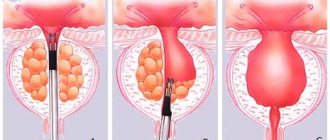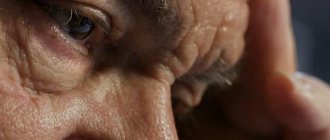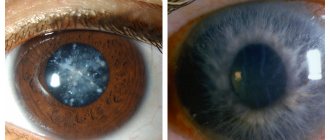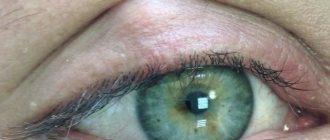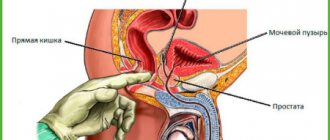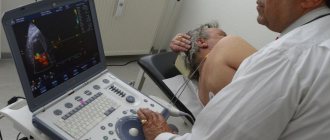Adenoma is a disease of the paraurethral glands, accompanied by their significant enlargement. It is a benign disease, that is, it does not metastasize, does not spread throughout the body and does not cause harm in itself. However, as the prostate adenoma increases in size, it begins to compress the urethra, which can lead to many problems associated with urination problems.
As a rule, the disease develops in men over 50 years of age, earlier - less often. But already at this age it occurs in 25% of the stronger sex. With age, the likelihood of its occurrence increases significantly and after 60 it occurs in almost half of men.
It is not known for certain what exactly causes the development of the disease. Scientists associate it with age-related hormonal changes - a decrease in testosterone production and an increase in estrogen synthesis. Factors that catalyze the occurrence of prostatic hyperplasia include increased alcohol consumption, obesity, a sedentary lifestyle, frequent hypothermia and genetic predisposition.
There are many methods for treating adenoma - procedural, medicinal and surgical. Among the latter, the most effective is transurethral electroresection (TUR), which you can sign up for in our clinic.
Preparing for surgery
Before the procedure, a number of preparations must be made:
- consult with a urologist and surgeon;
- inform the doctor about all medications taken, provide a complete medical history;
- If you are on anticoagulant treatment, you should stop it a week before surgery to reduce the chance of bleeding. Medicines can be resumed 10-14 days after the procedure.
It is imperative to provide doctors with complete information about what you have suffered:
- prosthetics of joints or blood vessels;
- replacing heart valves;
- coronary artery stenting;
- neurosurgical bypass surgery of the cisterns and ventricles of the brain;
- other types of implantation.
Also of great importance for medical personnel is data on the regular use of Warfarin, Plavix, Aspirin and a number of other medications, personal intolerance or allergies to certain drugs, and previous infection with Staphylococcus aureus, especially the methicillin-resistant strain.
As a rule, hospitalization occurs on the eve or directly on the day of surgery, immediately after a thorough examination and examination of the body to assess the state of health. After this, patients consult with an anesthesiologist, the type of anesthesia that will be used is determined, and premedication is prescribed if necessary.
12 hours before the procedure, it is recommended to stop eating, refuse or significantly limit fluid intake, and smoking. Before starting, the patient is given an antibacterial drug intravenously to reduce the likelihood of infection.
Anesthesia
During transurethral electroresection, the patient does not experience any unpleasant sensations thanks to the work of an experienced anesthesiologist. Currently, the procedure uses general or epidural anesthesia, each of which has its own advantages and disadvantages.
General anesthesia
General anesthesia, which has already become a classic, allows the patient to be put into a state of deep sleep, in which he feels absolutely nothing. Before the main drug, a sedative is injected intravenously - the so-called preliminary anesthesia, after which a tube is installed in the trachea, through which a carefully calculated mixture of oxygen and a special agent is supplied. It relaxes all the muscles of the body, after which you can begin the operation. The depth of “sleep” is easily regulated by the amount of incoming gas; after stopping its supply, the patient quickly comes to his senses. In some cases, the endotracheal route of administration can be replaced by a mask route.
Despite its high efficiency and simplicity, it is used in cases where epidural anesthesia is impossible for some reason. This is due to a number of complications and side effects, which include:
- headache;
- confusion;
- dizziness;
- nausea;
- muscle pain;
- sore throat;
- cough;
- occasionally - a shrunken voice.
Contraindications for general anesthesia include an individual allergic reaction to the tube material or drug, pneumonia or respiratory tract infection.
Epidural anesthesia
This type of anesthesia leaves the patient clearly conscious, but completely blocks the sensitivity and mobility of the lower body. Epidural anesthesia requires significantly more preparation time. Approximately 30 minutes before the procedure, a puncture is made above the lumbar spine with a special sterile needle in an area previously numbed with local anesthesia and a catheter is installed through which the drug is administered. It is pulled along the back to shoulder level, where it can be easily accessed and the amount of incoming substance can be adjusted.
The advantages of this type of pain relief include:
- high controllability;
- fewer complications and side effects;
- no strain on the respiratory system and no depressing effect on the brain;
- short recovery time.
Among the complications, one can highlight only tremors in the legs, pain in the back and head, and they occur relatively infrequently and completely disappear after a few hours.
Contraindications to epidural anesthesia are allergies to the drugs used, diseases of the spine, problems with blood clotting, including those due to long-term use of anticoagulants, and infectious diseases. It will also have to be abandoned if there are pustules, inflammation, or damage in the puncture area.
Reviews of prostate removal operations
Igor B.: “We did a TOUR at the city hospital. The general anesthesia took a long time to wear off and was unpleasant. Apparently, the anesthesiologist was not very good... Nothing bad, except pain after. Tolerable. I’m recovering in the sanatorium for 21 days.”
Andrey1975: “At first they scheduled an operation using the incisional method, then they decided to observe over time. I’m currently receiving treatment at Vody.”
Georgy: “I prepared mentally for a long time. I came for the operation only because my wife insisted. Under local anesthesia it’s tolerable... but it’s better not to allow it.”
Operation description
Transurethral resection is currently considered the “gold standard” for surgical treatment of prostate adenoma. In general, the operation takes place in several stages:
- a special endoscope is inserted through the urethra to the prostate;
- with a resection loop using an electrosurgical generator, the adenoma is cut down to the surgical capsule;
- the separated hyperplastic tissue moves into the bladder under the influence of fluid movement;
- with a special syringe connected to a resectoscope, it is washed outside the body;
- the bladder is drained and a catheter is installed.
A miniature optical system is built into the endoscope channel, displaying high-resolution images on the screen. This gives complete control over the manipulations being carried out, provides comprehensive information about everything happening in the working field, and allows you to quickly respond to any changes.
Progress of the procedure
The operation is usually performed under general or spinal anesthesia and lasts about 1-1.5 hours.
The surgeon inserts a fiber-optic resectoscope into the urethra, which is a thin tube approximately 30.5 centimeters long and 1 centimeter in diameter. The resectoscope consists of a light source, valves for fluid to flush the surgical area, and an electrical loop that removes or vaporizes tissue and cauterizes blood vessels. No incision or stitches are required.
After all procedures are completed, a 1-2 day hospital stay is usually required.
After surgery, the patient is usually given a Foley Catheter, which remains in place for 1 to 3 days to allow urination. This device is a tube inserted through the opening of the penis to drain urine. The catheter may cause temporary bladder spasms, which may be painful. The catheter may be removed while the patient is in the hospital or after he goes home.
Postoperative period
Depending on the size of the prostate gland, the number of adenomatous nodes formed and the overall complexity, the operation can last from 45 to 90 minutes, rarely a little longer. On the first day, hematuria may appear - blood in the urine, in some cases this continues for a longer time. To speed up the removal of tissue debris, it is recommended to drink large amounts of fluid, especially in the first hours after the procedure. Eating is allowed in the evening of the same day.
The catheter is removed after a day or two, depending on the speed of recovery. After this, frequent urination with slight painful sensations is often observed - if necessary, they can be relieved with injections or painkiller tablets.
Frequent urgency, nocturia (predominance of nighttime diuresis over daytime) and cases of incontinence may continue for several days. They are caused, first of all, by a sharp significant decrease in prostate volume and weakening of the pelvic floor muscles. To reduce recovery time, it is recommended to engage in regular exercise immediately after surgery.
It should also be understood that the unpleasant consequences are temporary and most of them are caused not by the removal of prostate tissue, but by the overactive functioning of the bladder. Feeling constant fatigue in the first two weeks is also a normal reaction of the body. If urination is difficult or the patient is unable to urinate on his own, a catheter will be inserted into his bladder and he will be discharged with it.
You can start working 10-14 days after surgery. But if the patient’s activity is associated with intense physical activity, heavy lifting and active movement, urologists at our clinic recommend extending the recovery period to 4 weeks.
It is also recommended to resume sexual activity no earlier than after 4-5 weeks. The operation has virtually no effect on erectile function, therefore, if the patient did not have problems with it before the procedure, he will not have them after.
Laser removal of prostate adenoma
The latest word in science in the treatment of benign prostatic hyperplasia is laser transurethral resection. Types of operations performed using a laser can be divided into the following categories:
- Laser vaporization of the prostate. This method involves layer-by-layer evaporation of prostate tissue. After this operation, the patient can return to normal life in the near future - literally in 2-3 days. What is important is that erectile function is completely preserved in most cases. Laser vaporization is also used in the palliative treatment of stage 3-4 prostate cancer - restoration of impaired urination helps improve the patient's life expectancy and its quality.
- Laser enucleation or “husking” of the prostate. This method is more radical, and it helps to preserve adenoma nodes, which can be sent for pathohistological examination in order to exclude the presence of cancer cells. Enucleation is used even in cases where the volume of the hyperplastic gland reaches 200 g or more. As with vaporization, this method practically does not cause complications and preserves sexual function.
- The use of laser as an auxiliary method of coagulation during open radical prostatectomy to reduce blood loss.
Among the disadvantages of TUR performed with a laser, many cite the rather high price associated with the use of the latest equipment and consumables. But in many ways, this cost is offset by a reduction in costs associated with hospital stay and possible complications, which often develop after open operations. The ideal treatment method that will help get rid of the disease and maintain men's health can only be recommended in each specific case by a doctor.
Information for non-residents: Please inform the coordination center in advance about your arrival. The cost of living in the hospital is 220 UAH. per day.
What should you pay attention to?
TUR of prostate adenoma is already a fairly standard operation, performed quite often, so in the vast majority of cases it takes place without any unpleasant consequences. However, you should carefully monitor your own health, paying special attention to:
- elevated body temperature that does not decrease over a long period of time;
- pain and burning when urinating;
- constantly increasing imperative urges;
- persistent hematuria;
- nocturia lasting longer than 2 months;
- sudden bleeding.
If you notice any of these or any other symptoms of concern, you should immediately contact a urologist - you may need to be readmitted to the hospital.
Postoperative rehabilitation of the patient
When prostate adenoma develops, surgery is an effective treatment method. On average, the postoperative period can last from 1 to 4 days. Recovery may take one to two months, and pain may occur periodically when urinating.
After the patient has arrived home, he must take a course of medications prescribed by the doctor, follow a certain diet, avoid heavy physical activity, do not play sports and not be sexually active for a certain period.
Doctors at the R. M. Fronstein Urology Clinic will be able to choose the appropriate type of operation to remove prostate adenoma. You should not risk your health, and if symptoms of the disease appear, it is better to immediately contact a specialist.
Advantages of transurethral electroresection
When choosing a method of surgical treatment, preference is most often given to TUR. This is due to the many advantages of the operation, including:
- low invasiveness – there is no damage to soft tissues when gaining access to the prostate gland and bladder;
- short rehabilitation period - already on the day of surgery, patients can get up and move relatively freely;
- the ability to visually assess the condition of the urinary canal and bladder;
- high level of control over the actions performed thanks to the laparoscope video system;
- the possibility of performing surgery in patients with severe intercurrent diseases;
- the possibility of simultaneously carrying out several procedures (for example, removing a stone from the bladder or dissecting a urethral stricture) - combined treatment;
- little or no bleeding - blood transfusion is required in extremely rare cases.
Thanks to this, TUR achieves much better results in the long term compared to other treatment methods.
How not to start the disease?
There is no universal method.
Each case in the clinical practice of urologists is exceptional and each patient has a unique history. Some men need surgical intervention immediately, while others can get by with physiotherapy or, for example, mud therapy (strip or application). Today, they are increasingly trying to use gentle methods and, for example, at Caucasian Mineral Waters they have developed a completely new type of healing remedy for the initial manifestations of benign prostatic hyperplasia, these are tambuel mud applicators. Such applicators are very similar in appearance to the shape of a suppository, but their action is softer, but no less effective. Use is possible only under the strict supervision of urologists.
Possible complications
Complications after TUR are quite rare, and serious consequences account for less than 0.5%. However, patients should be informed of the likelihood of their occurrence.
Thus, from 2 to 10% of operations lead to:
- bleeding requiring surgery;
- urethral damage;
- infections of the bladder and other organs of the genitourinary system;
- temporary urinary incontinence and frequent urination;
- incomplete removal of tissue fragments from the bladder cavity;
- recurrent obstruction requiring another operation;
- perforation of the bladder, leading to suturing of its walls and installation of a catheter.
In some cases, cancer cells are found in hyperplastic tissues, which indicates the transformation of the tumor from benign to malignant.
About the doctor
The most modern technique, the latest equipment, comfortable conditions, although important, do not determine the success of treatment - it is extremely important to choose a good surgeon. In our clinic, operations are performed by a urologist surgeon, oncologist, candidate of medical sciences Pshikhachev Akhmed Mukhamedovich. 15 years of education, more than 15 years of surgical experience, hundreds of successful operations, membership in domestic and foreign associations, participation in professional conferences and congresses, internships in leading foreign clinics, more than 60 scientific papers confirm the high qualifications, professionalism and extensive experience of a specialist.
The cost of the operation and the best places for it to be performed
Different types of operations have different costs, which depend on the country and the clinic.
The cost of the operation in Moscow clinics, depending on the method, is 85,000–95,000 rubles. Prices for Transurethral resection operations in Germany include visa support, hospital stay (4 days), preoperative examination, test results, surgery, consultation and doctor’s recommendations. The cost of such an operation is from 9,900 to 13,000 euros (as of May, 2019). Treatment of prostate adenoma with this method in Israeli clinics costs 12,000–14,000 US dollars. It is Germany and Israel that are leaders in this area, because the hospitals in these countries employ the most qualified specialists. Clinics in these countries are equipped with the latest equipment. There are also good reviews about carrying out these operations in Turkey. It should be noted that operations in Turkey are performed by the same doctors who operate in Germany, since there is an integration program.

